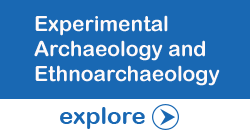Down Ancient Trails: June 2020 lecture series
Down Ancient Trails: June 2020 Lecture Series
Return to home page of Down Ancient Trails * Speakers: May 2020 * Speakers: June 2020 * Speakers:July 2020
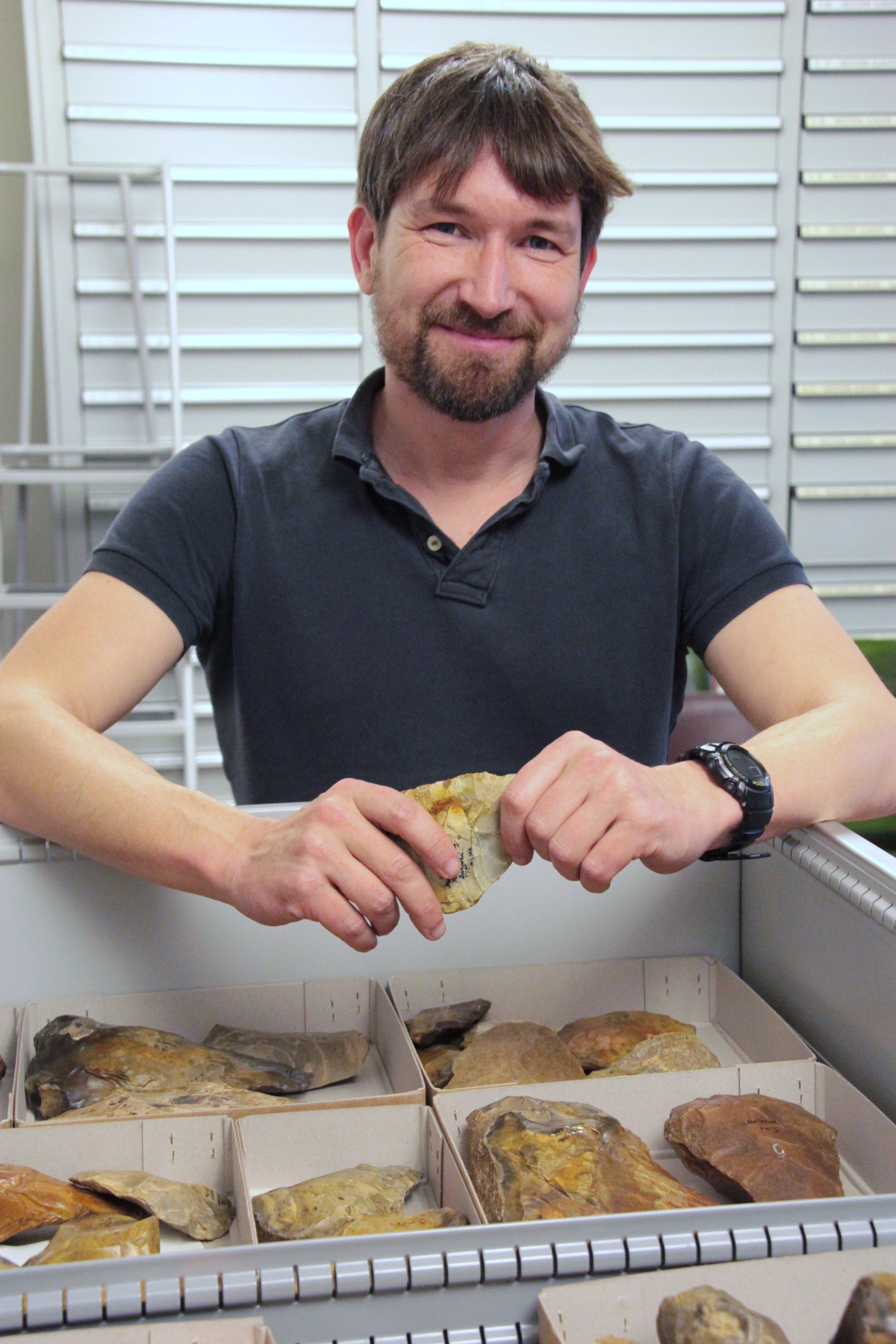 June 25, 2020, 6.30 pm (IST), Dr. Matthew Pope, UCL Institute of Archaeology, London.
June 25, 2020, 6.30 pm (IST), Dr. Matthew Pope, UCL Institute of Archaeology, London.
Topic: Neanderthal Adaptations on the Edge of their World: Evidence from La Cotte de St Brelade and the La Manche Palaeolandscape. MIS 8-3.
Abstract: La Cotte de St Brelade, in the Channel Island of Jersey, is a key record of Middle Palaeolithic behaviour preserving stone artefacts and faunal remains in sequence spanning parts of the Middle and Late Pleistocene. It lies within a mostly submerged region which encompasses the English Channel and surrounding coastal areas of France and England: the La Manche palaeolandscape. In this lecture the record of Neanderthal behaviour from La Cotte is considered against that of the wider region raising questions about population continuity or replacement with changes in climates, sea level and environments.About: Dr Matt Pope leads Palaeolithic research at the UCL Institute of Archaeology. Through research projects on the archaeology of Boxgrove and La Cotte de St Brelade ,as well as helping to lead practise in Palaeolithic rescue archaeology, he has focussed on early human landscape use, occupation histories and interpretative frameworks for record in North West Europe.
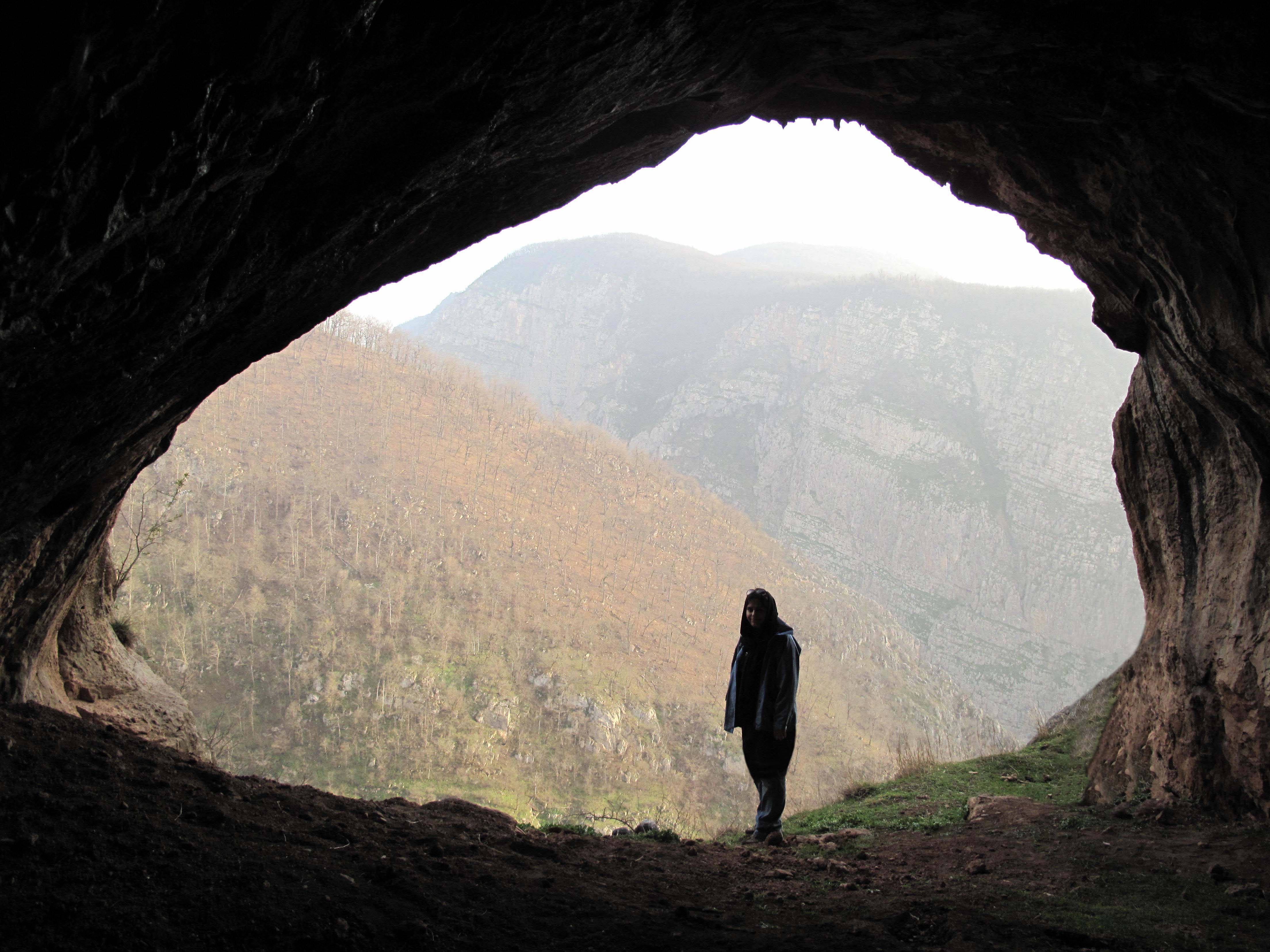 June 21, 2020, 2 pm (IST), Dr. Sonia Shidrang, National Museum of Iran, Tehran
June 21, 2020, 2 pm (IST), Dr. Sonia Shidrang, National Museum of Iran, Tehran
Topic: The Middle-to-Upper Paleolithic Transition in Zagros: Where do we stand?
Abstract: The appearance of Initial Upper Paleolithic lithic industries in West Asia and then the widespread emergence of Early Upper Paleolithic lithic industries alongside other lines of archeological evidence, signal significant changes in human behaviors during MIS 3. The profound cultural changes in the beginning of Upper Paleolithic are usually attributed to new major dispersals of Anatomically Modern Humans in Western Eurasia and the ambiguous process of Neanderthals extinction. Until recently, our information on this major bio-cultural replacement was quite insignificant in several regions of Southwest Asia, mainly due to the sensitive geopolitical situation of some parts and inaccessibility of the sites. However, new lines of evidence and studies from pertinent geographical regions are emerging which can improve current explanatory models and hypotheses. The Zagros mountain range in the west of Iran with its intermountain eco-cultural niches is one of the areas that increasingly contributes to our knowledge of the transitional period from Middle to Upper Paleolithic in Southwestern Asia. In this Webinar, I will present an overview of the lithic-based debate of continuity vs discontinuity in Zagros and the major evidence that have shaped our understanding of the transition from Middle to Upper Paleolithic in this region.
About: Sonia Shidrang is an experienced archaeologist in the field of Paleolithic archaeology, primarily interested in (a) origin and evolution of the earliest culture of Anatomically Modern Humans in Southwest Asia, particularly Iranian Plateau; and (b) Techno-economic changes during Middle to Upper Paleolithic transition in the Zagros mountains. She holds a PhD in Paleolithic archaeology from PACEA, Bordeaux University and a joint Master in Quaternary and Prehistory from Università degli Studi di Ferrara and Muséum national d'histoire naturelle de Paris back in 2007. She has conducted several excavations in Upper Paleolithic sites in the Zagros mountains and currently is a researcher at the National Museum of Iran.
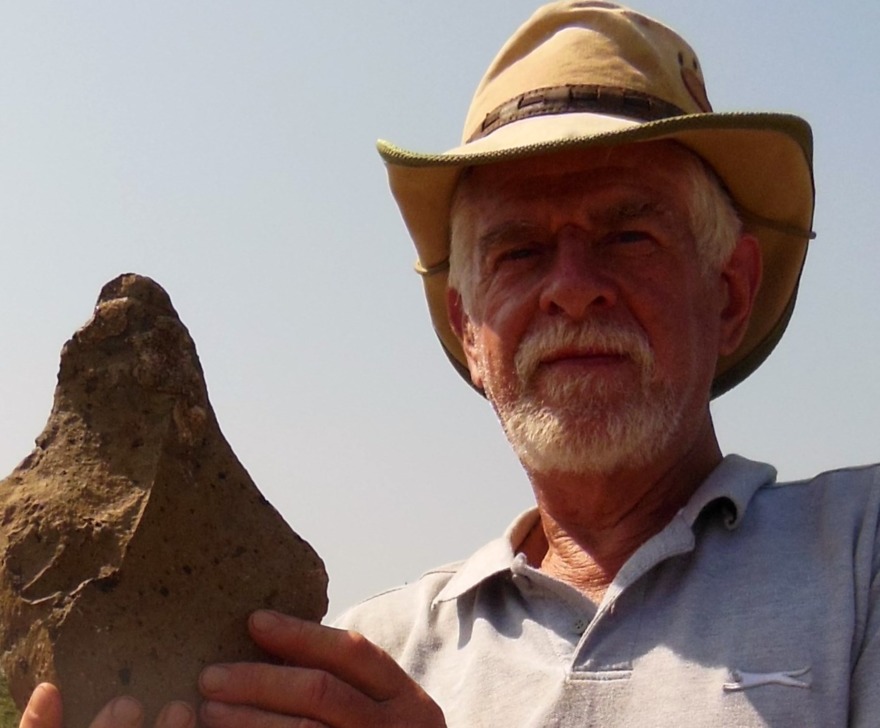
June 20, 2020. Professor John Gowlett, Professor of Archaeology and Evolutionary Anthropology in the University of Liverpool.
Topic: The unfolding archaeology of Kilombe Volcano, Kenya. Registrations will open shortly.
Abstract: The new project at Kilombe has involved exploring the caldera of the extinct volcano, which contains a deep sequence going back towards the beginning of the Pleistocene. The sequence is continued forwards on the southern flanks of the mountain. Here are the major Acheulean sites which will be the main focus of the talk, and which date to around one million years ago. The Kilombe main site, GqJh1, stands out for having one single extensive archaeological horizon, which allows comparisons of many different localised outputs from the same general early human population. Sites at slightly higher levels are useful as outgroups, and suggest that the Acheulean had similar overall characteristics in the area over a long period. The sites provide an ideal basis for looking at early cognitive and visuo-spatical abilities used in the manufacture of artefacts.
About: John Gowlett is Professor of Archaeology and Evolutionary Anthropology in the University of Liverpool. He took his degrees from the University of Cambridge, with his doctoral thesis based on Acheulean sites in East Africa. As the first archaeologist in the Oxford Radiocarbon Accelerator Unit he worked in a number of countries around the world. He has been involved at Kilombe since the early 1970s. He was also involved in excavations in UK at the Middle Pleistocene site of Beeches Pit, and has worked at the South African Acheulean site of Cornelia with Dr James Brink. He has been at the University of Livrpool for more than thirty years, and began renewed investigation of Kilombe Mountain with help from the british academy in 2008. The current project has bene supported by PAST and Wenner-Gren Foundations and the Leverhulme Trust.
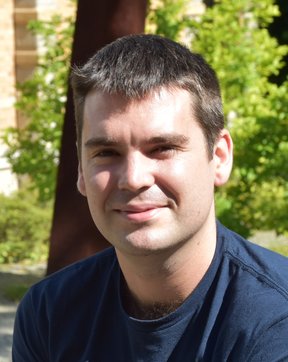 June 19, 2020, 6.30 pm (IST) Dr. Patrick Roberts, Research Group Leader, Department of Archaeology, Max Planck Institute for the Science of Human History, Jena, Germany.
June 19, 2020, 6.30 pm (IST) Dr. Patrick Roberts, Research Group Leader, Department of Archaeology, Max Planck Institute for the Science of Human History, Jena, Germany.
Topic: A novel Pleistocene niche for Homo sapiens?: Comparing the ecological and environmental contexts of our species and its closest relatives
Abstract: Definitions of our species have tended to focus on fossils, genetics, or its unique capacities for symbolism, language, social networking, technological competence, and cognitive development. More recently, however, attention is increasingly turning towards humans’ ecological plasticity. In this talk I will provide a critical evaluation of existing archaeological and palaeoenvironmental datasets relating to the Pleistocene (300-12 ka) dispersal of our species within and beyond Africa. I will argue, following comparison with the available information for other members of the genus Homo, that our species developed a new ecological niche, that of the ‘generalist specialist’. Not only did Homo sapiens as a whole occupy and utilise a diversity of Pleistocene environments, across the majority of the planet's continents, but particular human populations also specialised in their adaptations to some of these environmental extremes. Understanding this ecological niche provides a hypothetical, testable framework for discussing what it means to be human and perhaps how our species became the last surviving hominin on the planet.
About: Dr. Patrick Roberts is a Research Group Leader at the internationally renowned Max Planck Institute for the Science of Human History, Jena, Germany. Here, he created and runs the Stable Isotope Laboratory for the Department of Archaeology, applying chemical techniques to fossil humans, animals, and sediments to answer questions about past diets and ecological adaptations, particularly during the evolution and dispersal of our species, Homo sapiens. For most of the last decade he has led major research programmes that explore past human occupation and alteration of tropical forests, environments once considered to be unattractive for past human societies, and has published the first global review of 'Tropical Forests in Prehistory, History, and Modernity' with Oxford University Press. He has sat on UNESCO panels that bring together archaeology, anthropology, conservation scientists, and modern stakeholders in the development of sustainable approaches to the management and use of tropical forests on a global scale. He currently holds a prestigious ERC Starter Grant for his 'PANTROPOCENE' project and is a Senior Research Fellow at the University of Queensland, Australia.
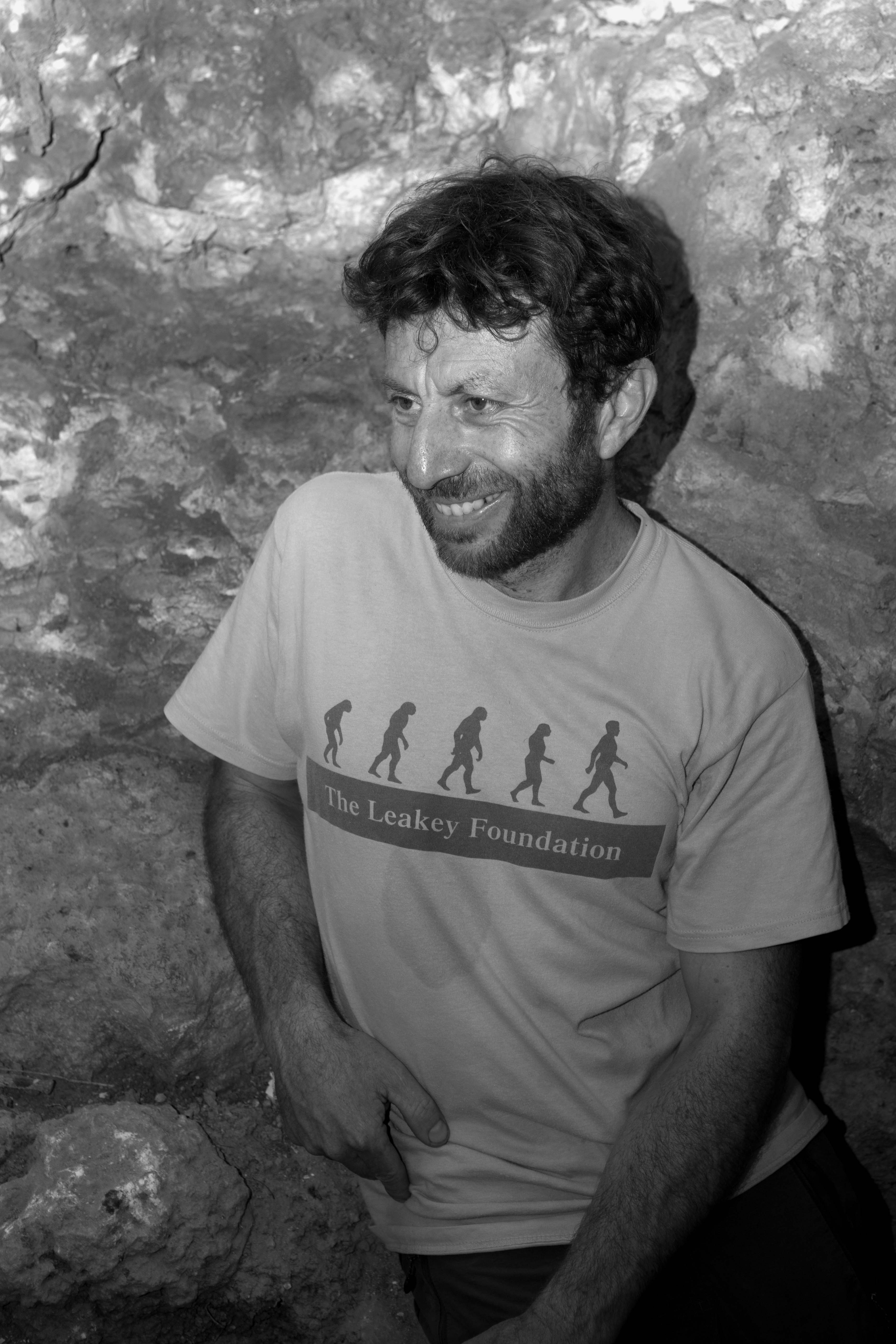 June 18, 2020, Professor Yossi Zaidner,Senior Lecturer of Prehistoric Archaeology, Institute of Archaeology, the Hebrew University of Jerusalem. Topic: Misliya Cave, early Homo sapiens, and Lower to Middle Paleolithic transition in the Levant.
June 18, 2020, Professor Yossi Zaidner,Senior Lecturer of Prehistoric Archaeology, Institute of Archaeology, the Hebrew University of Jerusalem. Topic: Misliya Cave, early Homo sapiens, and Lower to Middle Paleolithic transition in the Levant.
Abstract:The Lower to Middle Paleolithic transition is associated with major technological changes (e.g., the emergence of Levallois technology) among human populations in Africa, Europe, and the Near East. Was this transition a gradual and continuous process or a sharp change associated with the arrival of new populations is still hotly debated. Misliya Cave is one of the few sites that documents this transition in the Levant. In this talk, I will present the late Lower Paleolithic (the Acheulo-Yabrudian techno-complex) and the Early Middle Paleolithic record of Misliya Cave and discuss it within the framework of the late Middle Pleistocene archaeological record of the Levant and beyond.
About: Yossi Zaidner is a Senior Lecturer of Prehistoric Archaeology in the Institute of Archaeology, the Hebrew University of Jerusalem. Currently, he leads several research and excavation projects at the Middle Paleolithic sites in Israel (including the sites of the Nesher Ramla and Tinshemet Cave). His current research explores questions of human technological and behavioral evolution during the Lower and the Middle Paleolithic, Homo sapiens & Neanderthal interactions during the Middle Paleolithic, and the origin and development of Levallois technology.
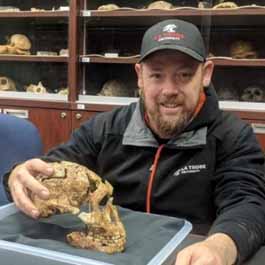 June, 15, 2020, 5 pm (IST) Professor Andy I.R. Herries, Head of Department of Archaeology and History at La Trobe University, Australia. Topic: Human Evolution in southern Africa from the earliest occurrence of Homo erectus to modern humans: insights from the archaeological sites of Drimolen Cave and Amanzi Springs (South Africa).
June, 15, 2020, 5 pm (IST) Professor Andy I.R. Herries, Head of Department of Archaeology and History at La Trobe University, Australia. Topic: Human Evolution in southern Africa from the earliest occurrence of Homo erectus to modern humans: insights from the archaeological sites of Drimolen Cave and Amanzi Springs (South Africa).
Abstract: The early hominin species Australopithecus appears to become extinct around 2 million years ago and is replaced by two very different genera that appear to exploit the south African landscape in very different ways, Paranthropus and Homo. This transition is documented at the cave site of Drimolen, near Johannesburg in South Africa, where LTU Archaeology runs a field school each year (June). Between 2015 and 2018 this field school discovered some of the most complete skulls of these genera ever found, including the oldest potential occurrence of Homo erectus. Paranthropus goes extinct perhaps a million years ago, while the other goes on to produce a rich record of Acheulian stone tools (sometime after 1.8 million to perhaps 300,000 years ago). Sometime between 500 and 200, 000 years ago the Acheulian transitions to smaller stone tool technology called the Middle Stone Age that is most often associated with the beginning of modern humans. This transition is not well documented, but recent excavations by LTU Archaeology have identified and dated a high-resolution sequence through this time period at the site of Amanzi Springs, near Port Elizabeth in South Africa. Moreover, extremely rare wood has been preserved in the sequence. The various new find from Drimolen and Amanzi will be explored in this talk and an outline of how this research is changing our understanding of human origins in southern Africa.
About: Prof Andy Herries is a geoarchaeologist and palaeoanthropologist who is currently the Head of Dept. Archaeology and History at La Trobe and runs The Australian Archaeomagnetism Laboratory. He undertook his BSc, MSc and PhD in archaeological science at the University of Liverpool in the UK, working on projects in South Africa to do with the stratigraphy and palaeomagnetic dating of early hominin fossil cave sites. He has now worked for 23 years in South Africa at numerous palaeontological and Early, Middle and Later Stone Age sites. He has also worked on sites in China, Oman, Saudi Arabia, Bulgaria, Kenya, Australia and the UK.
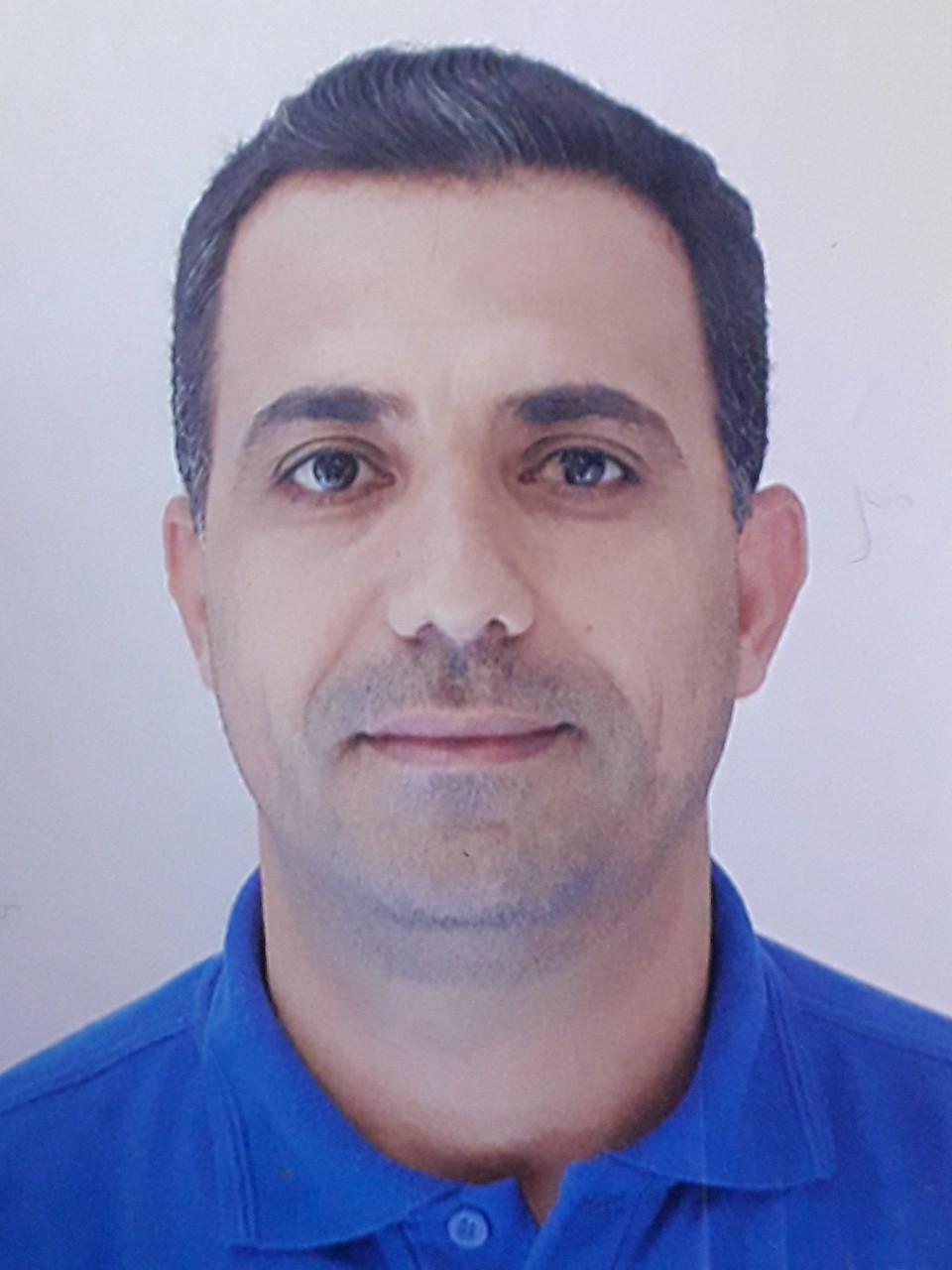 June 12, 2020, 6.30 pm (IST) Professor Jaafar Jotheri, assistant professor and vice-dean, Faculty of Archeology, University of Al-Qadisiyah, Iraq.
June 12, 2020, 6.30 pm (IST) Professor Jaafar Jotheri, assistant professor and vice-dean, Faculty of Archeology, University of Al-Qadisiyah, Iraq.
Topic: Holocene avulsion history of the Euphrates and Tigris rivers in the Mesopotamian floodplain.
Abstract: The present study deals with reconstruction of the ancient courses of the Tigris and the Euphrates in the Mesopotamian floodplain, which covers most of the central and southern parts of Iraq. The focus is on tracing palaeochannel courses, determining when these palaeochannels were active, and understanding the patterns of avulsion and its impact on human settlements of ancient civilisations.
The research was carried out using a combination of geological, geomorphological, remote sensing, historical and archaeological approaches. Fieldwork included “groundtruthing” of the remote sensing work. A total of thirty seven boreholes were dug, sedimentary and geomorphologic documentation has been carried out, and twenty five shell samples were collected, and analysed by radiocarbon dating.
About: Jaafar Jotheri is a Geoarchaeologist with over 15 years experience in conducting archaeological excavations and survey across Iraq and Iran. He holds a PhD from the University of Durham. He is an assistant professor and vice-dean in the Faculty of Archeology, University of Al-Qadisiyah, Iraq where he is teaching and supervising both under and postgraduate students. He published 11 articles in chapters in books and prestigious journals. He involved in many current archaeological and heritage projects in Iraq such as British Museum project in Girsu site, Manchester University projects in Charax Spasinou and Tell Khaiber, Durham University project of Climate, Landscape, Settlement and Society: Exploring Human-Environment Interaction in the Ancient Near East, Sapienza University of Roma project in Abu Tbairah, Tokushima University project of the environmental geoarchaeology of the southern Mesopotamian floodplain". He currently won four small research grants from the British Institute for the Study of Iraq (London) , one small research grant from the Nehrain Network of the UCL one small research grant the Academic Research Institute in Iraq (USA) and one writing workshop form the British Academy.
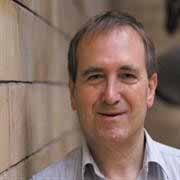 June 10,2020, 3.30 pm (IST), Professor Chris Stringer, Research Leader-Human Evolution, Department, Earth Sciences, Division, ES Vertebrates and Anthropology Palaeobiology Natural History Museum, London. Topic: Some current issues in Middle-Late Pleistocene human evolution. Registrations will open in the first week of June.
June 10,2020, 3.30 pm (IST), Professor Chris Stringer, Research Leader-Human Evolution, Department, Earth Sciences, Division, ES Vertebrates and Anthropology Palaeobiology Natural History Museum, London. Topic: Some current issues in Middle-Late Pleistocene human evolution. Registrations will open in the first week of June.
Abstract: Many of the supposed certainties of later Pleistocene human evolution have been swept away in the last decade. In this talk I will look at some of the outstanding current issues including the nature and timing of the last common ancestor of modern humans and Neanderthals, and the evolution and taxonomic status of Neanderthals, Denisovans and Homo sapiens.
About: Professor Stringer joined as a permanent staff of the Natural History Museum, in 1973 and is currently a Research Leader in Human Origins. His research was on the relationship of Neanderthals and early modern humans in Europe. He now collaborates with archaeologists, dating experts and geneticists, through his research on the Recent African Origin model for modern human origins. He has excavated sites in Britain and abroad, and directed the Ancient Human Occupation of Britain project from 2001-2013. He is currently co-director of the follow-up Pathways to Ancient Britain project. He has published numerous articles and books (this information is from https://www.nhm.ac.uk/our-science/departments-and-staff/staff-directory/chris-stringer.html , https://www.nhm.ac.uk/discover/human-evolution.html).
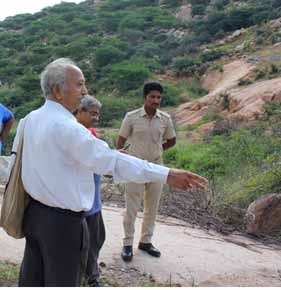 June 8, 2020, 6 pm (IST). Professor Ravi Korisettar, ICHR-Senior Academic Fellow, India. Topic: Robert Bruce Foote’s Legacy in Southern India. Registrations will open soon.
June 8, 2020, 6 pm (IST). Professor Ravi Korisettar, ICHR-Senior Academic Fellow, India. Topic: Robert Bruce Foote’s Legacy in Southern India. Registrations will open soon.
Topic: Robert Bruce Foote’s Legacy in Southern India
Abstract:At the end of nearly 40 years of relentless integrated geological and prehistoric survey Robert Bruce Foote left behind a great legacy of research in the twin fields of hard rock geology and prehistory of southern Indian Peninsula. His catalogues of prehistoric antiquities published by the Madras Government Museum, Chennai, are a major source of primary information on the nature and variety and archaeological contexts and the gaps showing tremendous opportunities for further investigations. Filling the gaps by formally trained archaeologists was the responsibility of the successive generations of geologists and archaeologists. This task has been very competently handled by archaeologists during the last nearly hundred years by successfully retracing the footsteps of Robert Bruce Foote and by responding to shifting paradigms in world prehistory and by adopting scientific methods. Today Indian prehistory finds am important place in te discussion on peopling of the earth and the credit goes to Indian prehistoric archaeologists. The presentation focuses on the landmark investigations in Indian prehistory and places on record the achievements of prehistoric archaeologists.
About: Ravi Korisettar is currently ICHR Senior Academic Fellow. Served in the Department of History and Archaeology, Karnatak University, Dharwad, from 1989-2013. His discovery of the Youngest Toba Tuff (YTT), volcanic ash of Sumatra origin, in peninsular river deposits was hailed as a ‘great discovery’ by the Indian press and its significance in dating the Middle and Upper Palaeolithic has brought the Indian subcontinent at the forefront of debate on expansion of modern humans out of Africa. He is considered an expert on the ongoing out of Africa debate. He discovered a large number of prehistoric painted rock shelters in the Kurnool District of Andhra Pradesh and this has led to a series of investigations on identifying suitable dating methods for rock art and understanding the non-material culture of the authors of these paintings. He is co-editor of Quaternary Environments and Geoarchaeology of India (Geological Society of India,1995), The Rise of Early Human Behaviour in Global Context (Routledge,1998), Indian Archaeology in Retrospect (ICHR and Manohar [4 volumes], 2001/2), and a special issue of Quaternary International (vol. 258, 2011) and editor of Beyond Stone and More Stones (Vo. 1: 2017 and Vol. 2: 2018) and the Third volume is in press. His collaborative publications have been well cited and his H-index is on the increase. The hallmark his work is the successful international collaboration that has secured due place to India in current global debates on peopling of the world. He has successfully applied the Public Outreach Archaeology as a strategy to prevent the loss of heritage and an initiative to launch heritage consciousness among the inhabitants in the neighbourhood of prehistoric archaeological sites.
 June 5, 2020, 6 pm (IST), Professor Nena Galanidou, professor of Prehistoric Archaeology, the University of Crete, Greece
June 5, 2020, 6 pm (IST), Professor Nena Galanidou, professor of Prehistoric Archaeology, the University of Crete, Greece
Topic: The Acheulean archaeology of Lesbos, Greece and the Aegean corridors connecting east and west Eurasia
Abstract: "I present work conducted at Lisvori-Rodafnidia, an extensive Acheulean site complex on the island of Lesbos in the north-east of the Aegean Sea. Situated on an ancient alluvial plain, in a fluvio-lacustrine context and in close proximity to a large palaeolake and the thermal springs in the Kalloni Basin, the site fills a lacuna, namely that of southeast Europe, in the pattern of dispersals of Acheulean-tool-using groups. pIRIR dating obtained for the sediments of the upper parts of the sequence delivered ages between 165 and 475 ka. The quantity and character of finds and the positioning of the site both on a local and a regional scale, namely being prominently placed at the border between two continents and the heart of Eurasia – all make Lisvori-Rodafnidia a key site in discussions of Middle Pleistocene hominin migrations northwestwards of the Jordanian Rift Valley. They invite us to rethink the Aegean Basin, as a passageway for migrations of Eurasian animal and hominin populations throughout the Pleistocene. Research on the submerged landscapes of the Aegean prompt a reconsideration of the biogeographical role of this area in Middle Pleistocene hominin settlement and migration. I articulate and elaborate on a working hypothesis, namely that the Aegean was not a barrier during the Middle Pleistocene but instead it offered attractive lands for occupation and viable pathways for dispersal at the very point where the Anatolian and the southern part of the Balkan Peninsulas meet".
About: She holds a PhD in Palaeolithic archaeology from the University of Cambridge and an M.Sc in archaeological computing from Southampton University. She was a post-doctorate research fellow at Clare Hall, Cambridge and more recently a visiting professor at IPH, Paris Museum of Natural History. She specializes in the Palaeolithic archaeology of southeast Europe and has conducted fielwork in Croatia and Greece. She leads two field projects: one exploring the Lower Palaeolithic archaeology of the Aegean islands – excavating the Acheulean site at Lisvori-Rodafnidia on Lesbos – and another exploring the Middle Palaeolithic archaeology of the Ionian Sea – excavating the Panthera Cave on the islet of Kythros. Research interests: Lower and Middle Palaeolithic; continental shelf prehistoric research; lithic technology; ethnographic and prehistoric hunter-gatherers; spatial archaeology; public archaeology. New Open Access Publication: The Archaeology of Europe's Drowned Landscapes. https://www.springer.com/gp/book/9783030373665#aboutBook
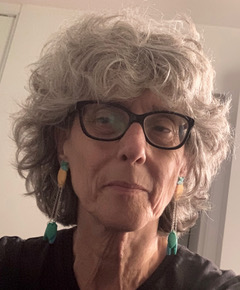 June 1, 2020, 6 pm (IST). Professor Erella Hovers, Moshe Stekelis Professor of Prehistoric Archaeology, The Institute of Archaeology, Hebrew University of Jerusalem, Israel
June 1, 2020, 6 pm (IST). Professor Erella Hovers, Moshe Stekelis Professor of Prehistoric Archaeology, The Institute of Archaeology, Hebrew University of Jerusalem, Israel
Topic: Taking the High Road out of Africa? Introducing Melka Wakena, an Early Pleistocene site on the Ethiopian Highlands
Abstract: Research on Pliocene -Early Pleistocene human biological and cultural evolution has focused intensely on the Eastern African Rift Valley, which has provides a rich body of multidisciplinary research on early hominins. The plateau along the Main Ethiopian Rift (MER) is a very different landscape form that reaches elevations over 2300 m above mean sea level The paucity of the paleoanthropological record from the plateau may reflect a prehistoric reality or objective constraints on research (e.g., disrupted landscape, lack of sediments of relevant ages), or be an artifact of research bias. Regardless, the outcome is that our perceptions and models of the biology, cultural behaviors, cognitive abilities and population dynamic and interactions of Early Pleistocene hominins are constructed from a limited perspective of the Rift. This talk presents the first results of exploratory work at Melka Wakena, a newly-discovered archaeological site-complex in the Ethiopian highlands, where a series of localities associated with Acheulian lithic technology date to a time span between 1.6 Ma and >0.7 Ma.
About: Leads research projects in Israel and Ethiopia. Interested in early prehistory (Oldowan, Acheulian and Middle Paleolithic/ Middle Stone Age). Among her interests – lithic technology, site formation processes, ethnographic and prehistoric hunter-gatherers, innovations studies, social learning, cultural evolution and the evolution of culture.
Return to home page of Down Ancient Trails * Speakers: May 2020 * Speakers: June 2020 * Speakers:July 2020


